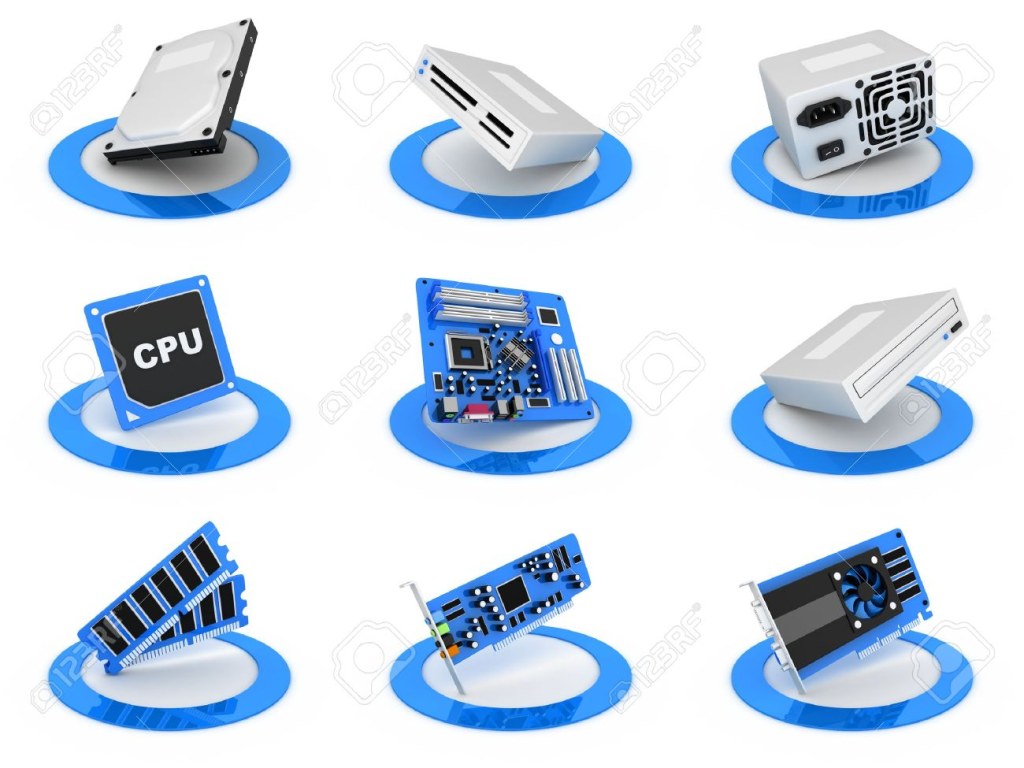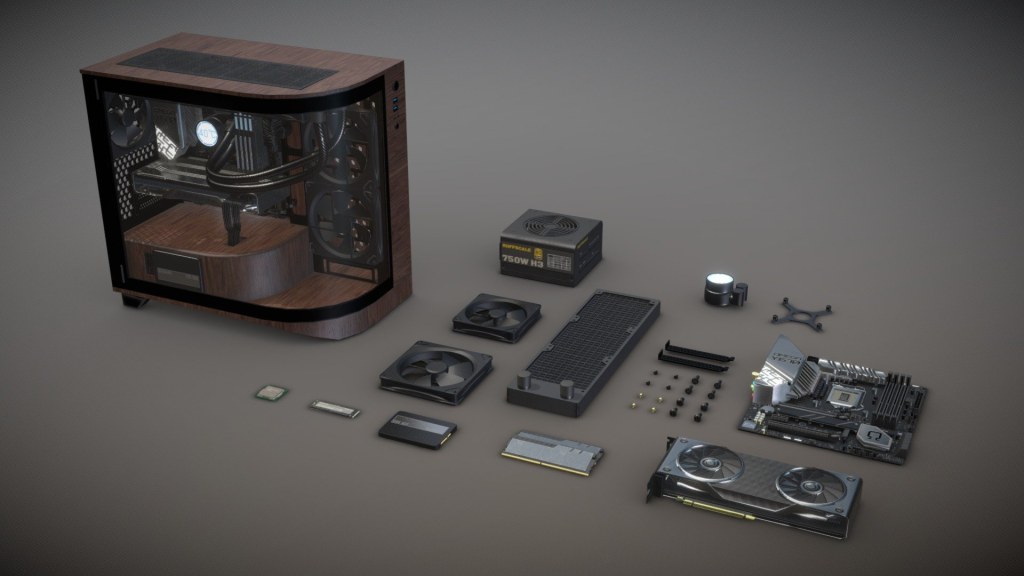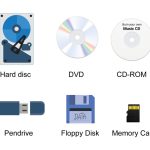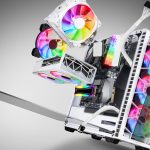Revolutionize Your Tech: Unleash The Power Of Computer Parts 3D!
Exploring Computer Parts 3D: A Revolutionary Technology Shaping the Future
Greetings, Readers!
Today, we delve into the fascinating world of computer parts 3D. 🖥️🔧 A valuable technology that has taken the manufacturing industry by storm, 3D printing has revolutionized the way we create computer parts. In this article, we will explore the intricacies of computer parts 3D, its advantages and disadvantages, and how it is reshaping various industries. So, buckle up and join us on this exciting journey!
3 Picture Gallery: Revolutionize Your Tech: Unleash The Power Of Computer Parts 3D!



Introduction
In this section, we will provide a comprehensive overview of computer parts 3D, shedding light on its definition, purpose, and significance. Let’s dive in!
1. What is Computer Parts 3D? 🤔
Computer parts 3D refers to the process of using 3D printing technology to manufacture various components and parts that are essential for the functioning of computers. It involves creating three-dimensional objects by layering successive material layers based on a digital model. This groundbreaking technology has transformed the traditional manufacturing landscape, offering unprecedented possibilities for customization and rapid prototyping.

Image Source: 123rf.com
2. Who Benefits from Computer Parts 3D? 🤝
The applications of computer parts 3D are vast and diverse, benefitting numerous individuals and industries. From tech enthusiasts and hobbyists to large-scale manufacturers and healthcare professionals, this technology provides immense value. It allows for the creation of intricate and complex parts that were previously challenging to produce using traditional methods.
3. When Did Computer Parts 3D Emerge? ⏳
The concept of 3D printing dates back to the 1980s. However, it wasn’t until the early 2000s that the technology truly began to gain traction. With advancements in materials, printers, and software, computer parts 3D has become increasingly accessible and affordable. Today, it plays a crucial role in various industries, driving innovation and streamlining manufacturing processes.
4. Where is Computer Parts 3D Utilized? 🌍

Image Source: 123rf.com
Computer parts 3D finds applications in numerous industries worldwide. From aerospace and automotive to healthcare and consumer electronics, this technology is transforming the way products are designed and manufactured. Its ability to create complex geometries and functional prototypes has opened up new avenues for innovation and experimentation.
5. Why Choose Computer Parts 3D? 🌟
The advantages of computer parts 3D are multifold. Firstly, it enables customization, allowing individuals to tailor components to their specific needs. Additionally, it reduces lead times and costs associated with traditional manufacturing methods. Moreover, 3D printing promotes sustainability by minimizing material waste and optimizing resource utilization.
6. How Does Computer Parts 3D Work? 💡
Computer parts 3D involves a process called additive manufacturing. It starts by creating a digital 3D model of the desired part using computer-aided design (CAD) software. The model is then sliced into multiple layers, which are sequentially printed using a 3D printer. The printer deposits material layer by layer, gradually building the final object. This layer-by-layer approach enables the creation of complex shapes and intricate designs.
Advantages and Disadvantages of Computer Parts 3D

Image Source: sketchfab.com
Now, let’s take a closer look at the pros and cons of computer parts 3D:
1. Advantages of Computer Parts 3D 📈
– Customization: With computer parts 3D, users can easily customize components according to their specific requirements, allowing for personalized solutions.
– Rapid Prototyping: This technology enables the quick production of prototypes, reducing time-to-market for new products.
– Design Freedom: Computer parts 3D provides design freedom, allowing for the creation of complex and intricate geometries that were previously unachievable.
– Material Efficiency: Unlike traditional manufacturing methods, 3D printing minimizes material waste, making it a more sustainable option.
– Cost Savings: By eliminating the need for tooling and reducing manufacturing steps, computer parts 3D can significantly reduce production costs.
2. Disadvantages of Computer Parts 3D 📉
– Limited Material Options: While the range of available materials for 3D printing is expanding, it still lags behind the variety offered by traditional manufacturing methods.
– Production Speed: Although 3D printing has improved significantly, it is still slower compared to mass production techniques.
– Surface Finish: Parts produced through 3D printing may have a rougher surface finish, requiring additional post-processing steps for desired aesthetics.
– Equipment Cost: High-quality 3D printers can be costly, making the initial investment a barrier for some businesses and individuals.
– Intellectual Property Concerns: The accessibility of 3D printing raises concerns regarding intellectual property rights, as it becomes easier to replicate patented designs.
Frequently Asked Questions (FAQ)
1. Can computer parts 3D be used in the medical field?
Yes, computer parts 3D has numerous applications in the medical field, including the production of prosthetics, surgical guides, and anatomical models for preoperative planning.
2. Is computer parts 3D suitable for large-scale production?
While computer parts 3D excels in customization and rapid prototyping, it is not yet a viable option for mass production due to limitations in speed and production costs.
3. What are the most commonly used materials for computer parts 3D?
Some commonly used materials for computer parts 3D include plastics, metals, ceramics, and composites. The material choice depends on the specific requirements of the part.
4. Can computer parts 3D help reduce environmental impact?
Yes, computer parts 3D promotes sustainability by minimizing material waste and reducing the carbon footprint associated with traditional manufacturing methods.
5. Are there any safety concerns related to computer parts 3D?
While computer parts 3D is generally safe, some materials used in the process may emit potentially harmful fumes. It is essential to operate 3D printers in well-ventilated areas or use materials with low emissions.
Conclusion
In conclusion, computer parts 3D is a game-changing technology that is revolutionizing manufacturing processes across various industries. Its ability to create customized components, reduce lead times, and promote sustainability makes it a force to be reckoned with. As this technology continues to advance, we can expect even more incredible possibilities and innovations in the future.
Now that you are equipped with a deeper understanding of computer parts 3D, why not explore the limitless potential it offers? Whether you are an aspiring designer, a manufacturing professional, or simply curious about the latest technological advancements, embrace the world of computer parts 3D and unlock a future of endless possibilities!
Final Remarks
Dear Readers, we hope this article has provided valuable insights into the world of computer parts 3D. This technology is reshaping industries, empowering individuals, and driving innovation like never before. Embrace its potential, explore its capabilities, and join the digital revolution that is transforming the way we create and manufacture. Cheers to a future defined by limitless possibilities!
This post topic: Computer Hardware



